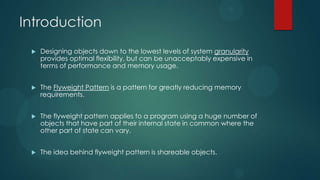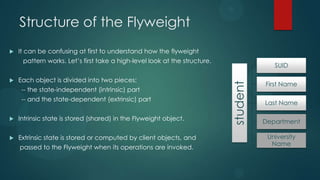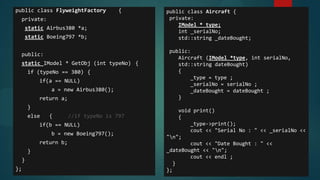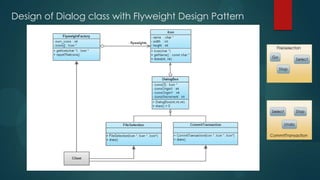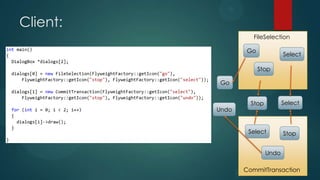The document discusses the flyweight design pattern, aimed at reducing memory consumption when managing a large number of objects with shared internal state. It explains the structure of flyweights, using examples such as character representation in word processors and complex aircraft models. The key takeaway is that by sharing intrinsic state among objects, significant memory savings can be achieved while the extrinsic state remains client-specific.



